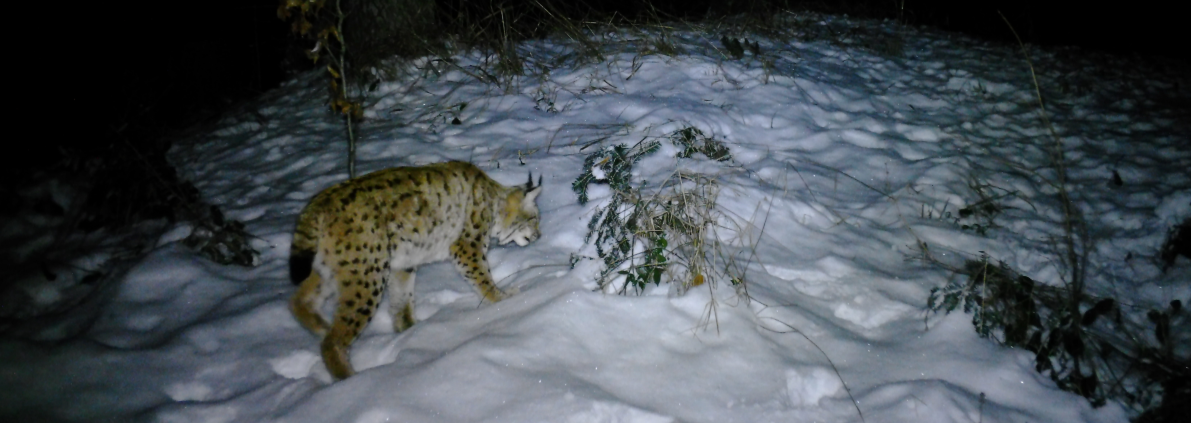First observations in the Bieszczady Mountains
In 2023, we started field activities in the Polish part of the Bieszczady Mountains as part of the LECA project. To effectively prevent human-carnivore conflicts, we need to know the range of occurrence of specific species – that is why we started monitoring lynxes in the south of our country in winter. Only such an approach gives a chance to form new populations of this beautiful and important species and, consequently, its effective protection. Installing camera traps sometimes may not be as easy as it may seem, as you can see in the photo. But it is an important part of our monitoring and conservation efforts.
How to avoid conflicts?
What causes human-carnivore conflicts? Sometimes too close proximity, e.g. when bears approach human settlements and buildings in search of food. They are very intelligent animals and once they learn that somewhere they have easy access to food, they will return there. Instead of hunting, they use our waste, which is why many years ago we developed the so-called “bear-resistant” trash containers, which bears are unable to open and are discouraged from coming to a given place. As part of the first stage of the LECA project, we financed the purchase of three such containers, which you can already find in the Bieszczady Mountains!
With people and for people
Large carnivores are an important element of the Carpathian ecosystems. This is where one of the largest populations of Eurasian lynx (Lynx lynx), gray wolf (Canis lupus) and brown bear (Ursus arctos) in Europe lives.
As part of the LECA project, an international, expert project team will jointly develop ways to protect large carnivores in the Carpathians. The project is to build a comprehensive, sustainable system for monitoring large predators (wolves, bears, lynxes) and offering joint solutions to combat poaching and resolve conflicts between people and large predators.
The aim of the project is to jointly develop mechanisms enabling the most conflict-free coexistence of lynxes, wolves and bears with people living in the areas where they occur. Therefore, we carry out our project activities in cooperation with the inhabitants of the Carpathians, in order to reconcile the needs of local communities with the protection of large predators.
